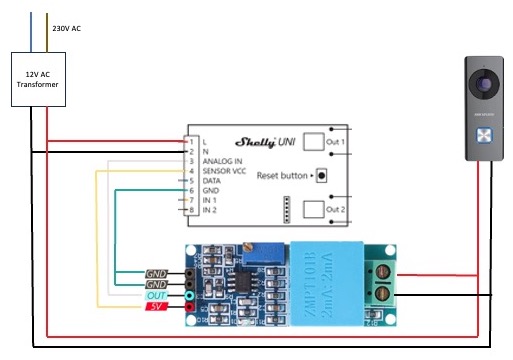Hi @seanblanchfield, great guide there. I’m the same guy that wrote the fw upgrade procedure that you mentioned in your beautiful guide.
The idea of using the Shelly UNI was very interesting, but I noticed you had issues reading AC inputs and you used a battery to solve the problem. I wanted to give you an idea: on the ipcamtalk 101 thread, I mentioned several times that these doorbells specify that their power requirement is X-Y AC, but in reality, they have an AC/DC converter, so you can actually power them with 12-24V DC. You might want to try that, so the UNI would then work correctly without requiring the battery.
For my setup, in order to intercept the button press, I used @fireflyelectronix sensor. Their site is offline now, but you can see everything on tindie: WiFi Doorbell Sensor from Firefly Electronix on Tindie and they have a GH repo here: GitHub - fireflyelectronix/firefly_doorbell_sensor.
I tested several sensors, but this one was the most reliable, it never misses a button press, and it uses MQTT for the notification.
The only downside I find is that it is battery powered and that it’s not based on ESPHome, so there could’ve been a native integration with HA. But MQTT is simple anyway.
I think this will be my last post reagrding the DB1, that has served me well with HA for the last years, I’ll probably switch to the new Reolink doorbell in the near future, so all this tinkering to make the doorbell work as expected will be a thing of the past, but I’ve learned a lot doing it. After all…tinkering is the real fun part of this home automation stuff. 










